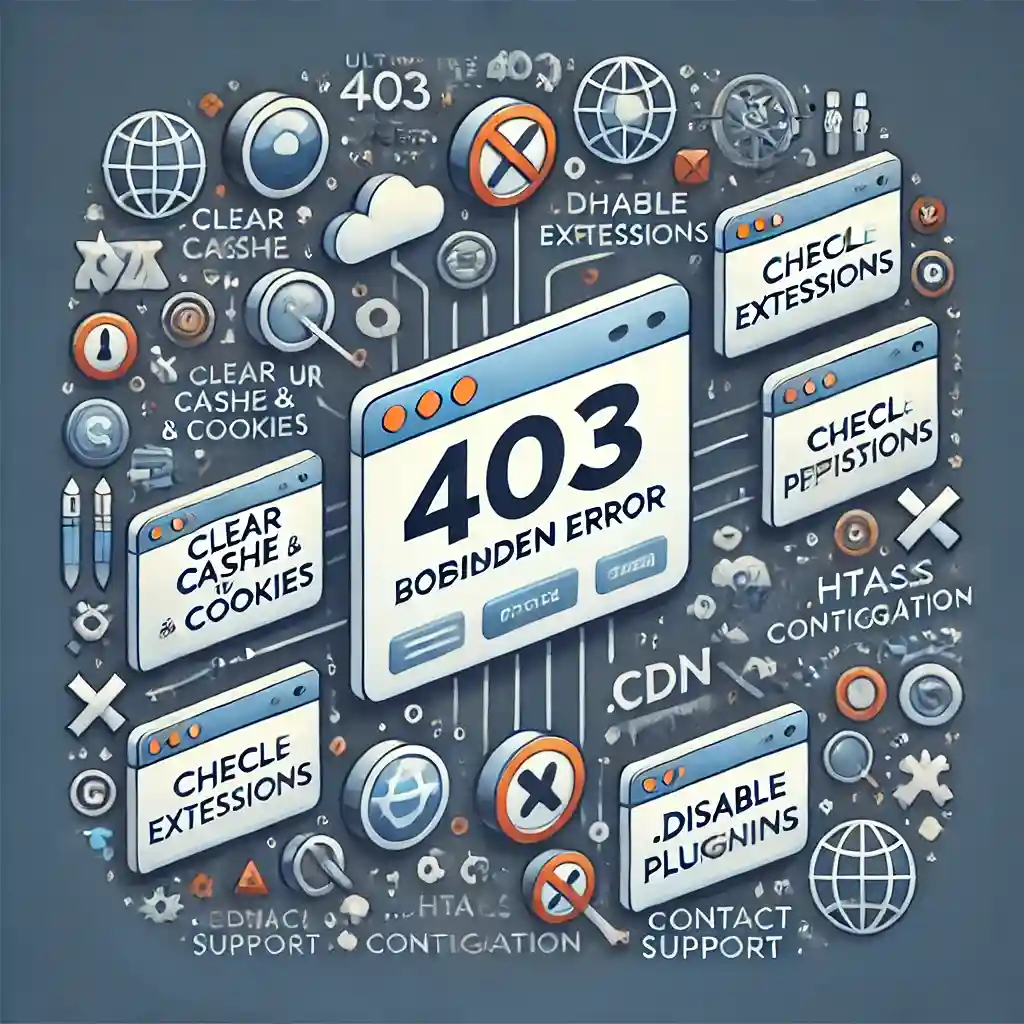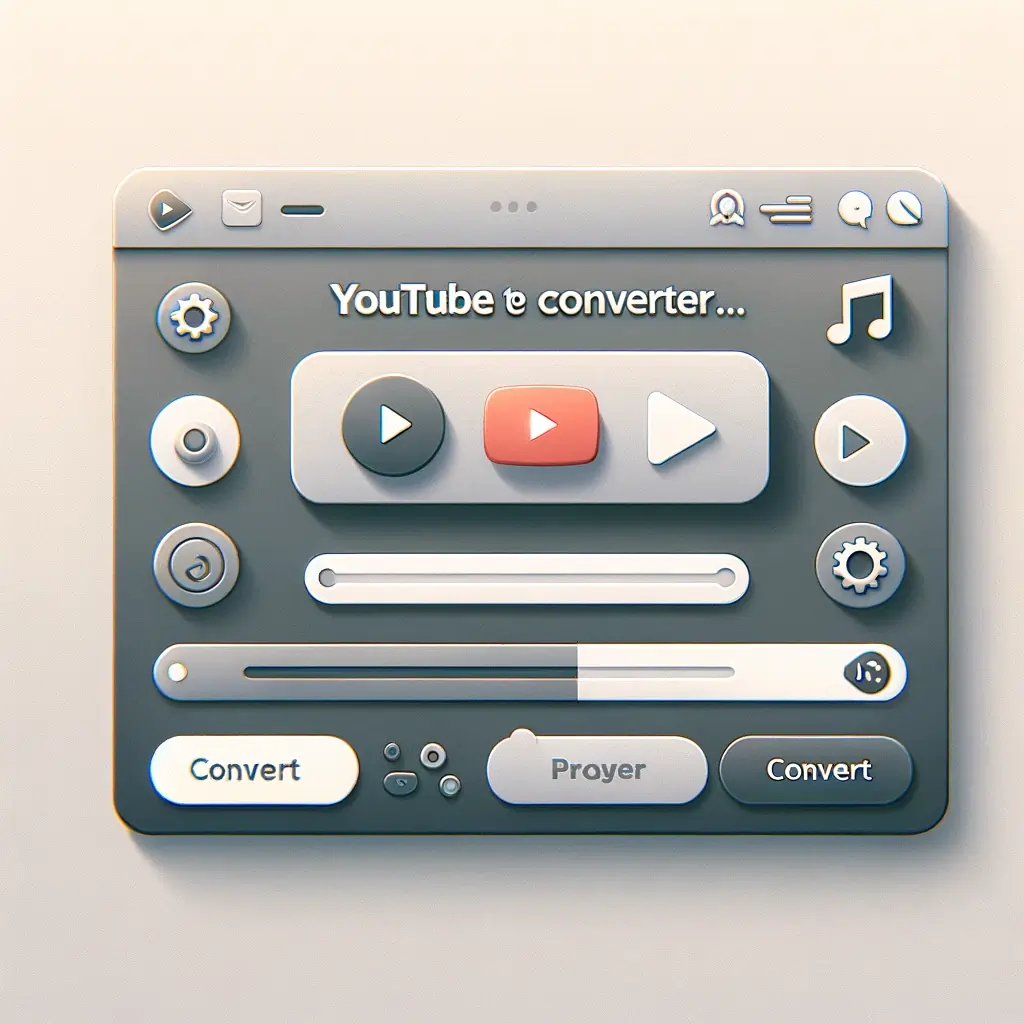Whether you’re a website owner, a developer, or just a user trying to access a website, encountering a “403 Forbidden” error can be frustrating. This error message usually signifies that you don’t have the necessary permissions to access a particular webpage. If you’re dealing with this issue and wondering how to fix it, you’ve come to the right place. In this comprehensive guide, we will explore a 403 Forbidden error and how to fix it using eight different methods.
403 Forbidden Error
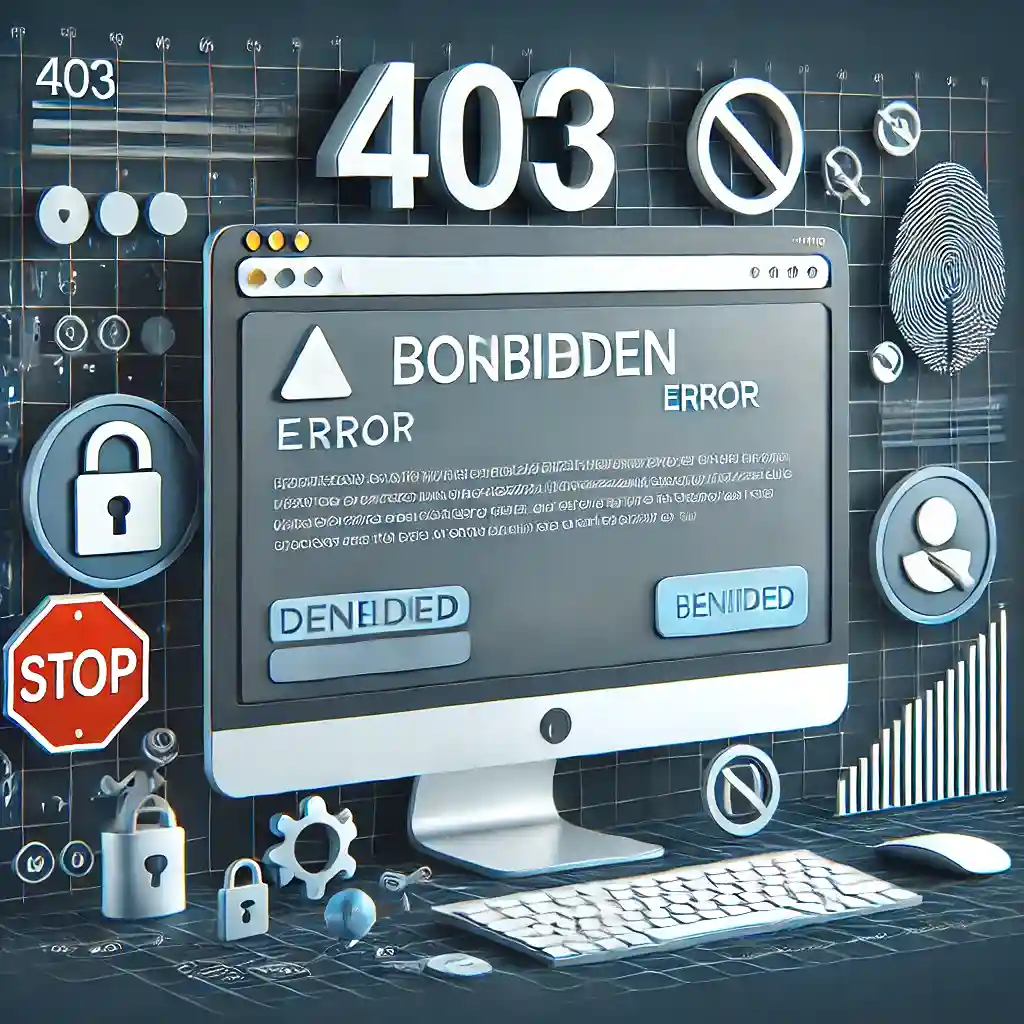
A “403 Forbidden” error indicates that the server understood the request but can’t or won’t fulfill it for specific reasons. In most cases, the issue lies with permissions: you are not allowed access to the requested resource, or the server is configured to deny the request.
Common Causes of the 403 Forbidden Error
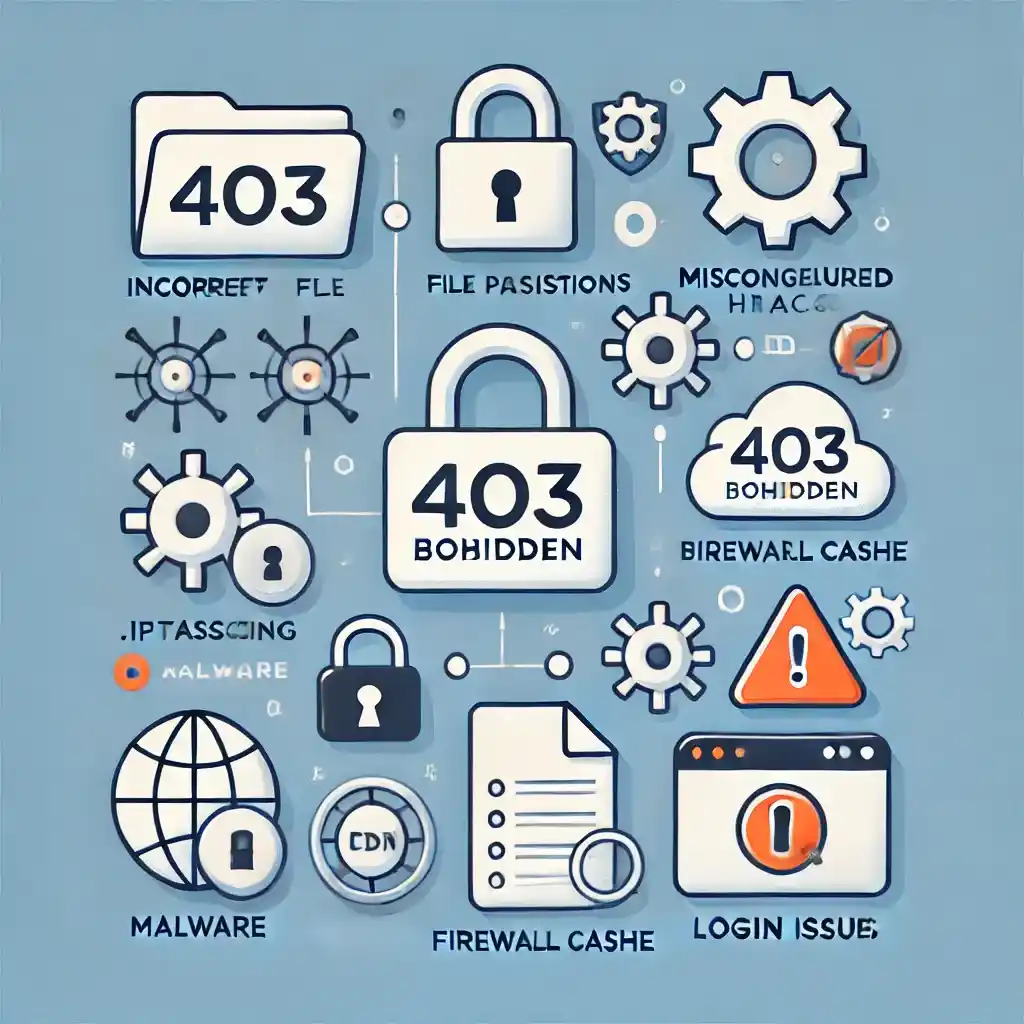
Incorrect File Permissions:
File permissions control who can read, write, or execute files on your web server. Incorrect file permissions can prevent users, including you, from accessing the required files, leading to a 403 error. For example, if a file should be publicly readable but set to a restricted mode, users will encounter a 403 Forbidden error when accessing it.
Misconfigured .htaccess:
The .htaccess file is crucial for website owners using Apache-based servers. It contains various directives (instructions) that tell the server how to behave. A wrongly configured .htaccess file can include instructions that block access to specific or all web pages, thus resulting in a 403 Forbidden error.
IP Blocking:
Some websites or servers block access from specific IP addresses due to security concerns or past suspicious activities originating from those IPs. If your IP is on one of these blocklists, you may receive a 403 Forbidden error when accessing the site.
Browser Cache:
Your web browser stores temporary files to speed up browsing, but sometimes, these files can become outdated or corrupted. If your browser attempts to load a cached version of a page that has different permissions than the live page, it could result in a 403 Forbidden error.
Firewall Rules:
Firewalls are a protective barrier between a trusted network (like your computer or local network) and an untrusted one (like the Internet). They operate based on specific rules, which might block legitimate website access, causing a 403 Forbidden error.
Malware:
Malware on your computer can modify your system settings and network configurations without your consent. This unauthorized change can sometimes block or redirect web requests, causing 403 Forbidden errors.
CDN Settings:
If you are using a CDN (Content Delivery Network) to speed up and secure your website, incorrect settings in the CDN’s Configuration can lead to 403 Forbidden errors. This could be due to IP blocking, geo-restrictions, or security features like Web Application Firewalls (WAF) that need fine-tuning.
Login Issues:
Some web pages are password-protected and require a valid login to access. If you’re trying to access such a page without first logging in or if your session has expired, you may encounter a 403 Forbidden error.
How to Fix the 403 Forbidden Error
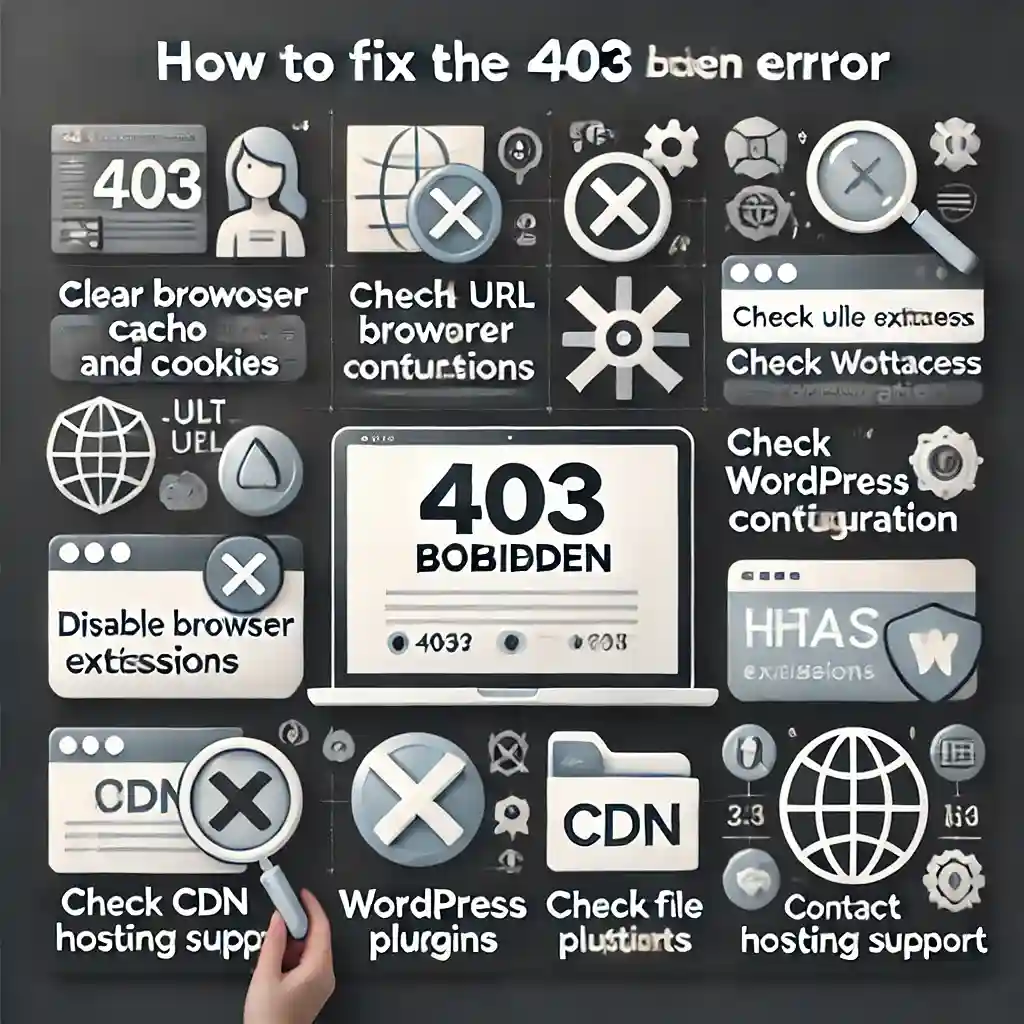
Method 1: Clear Browser Cache and Cookies
The old or corrupted cache can cause problems. Clear your browser cache and cookies and try reaccessing the webpage.
Method 2: Check URL for Errors
Ensure that the URL you are trying to access is correct. Typos or incorrect paths can lead to a 403 error.
Method 3: Disable Browser Extensions
Some extensions, especially ad blockers or privacy tools, can interfere with web access. Disable them temporarily to see if the issue is resolved.
Method 4: Check File Permissions
For website owners or developers, check if the permissions on your files and folders are set correctly. Usually, licenses like “644” for files and “755” for folders are recommended.
Method 5: Verify .htaccess Configuration
If you’re running an Apache server, a misconfiguration in the .htaccess file can lead to a 403 error. Check for any improper rules or syntax.
Method 6: Disable WordPress Plugins
If you’re using WordPress, a plugin might be the culprit. Disable plugins one by one to identify the problematic ones.
Method 7: Check CDN Settings
If you are using a Content Delivery Network, ensure it is not blocking your IP or causing the 403 error. Adjust your settings accordingly.
Method 8: Contact Hosting Support
When all else fails, contact your hosting provider’s customer support. They can provide insights and resolve the issue on their end.
READ ALSO: ERR_CONNECTION_REFUSED on Chrome: What It Is
Frequently Asked Questions
How do I correct file permissions to fix the 403 Forbidden Error?
If you can access the server, you can change file permissions using commands in the shell for Linux servers or through the properties dialog for Windows servers. File permissions should generally be “644” for files and “755” for directories.
What is a .htaccess file?
A .htaccess file is a configuration file used by Apache-based web servers. It can control various server functionalities, including URL redirection and password protection. Incorrect rules in this file can lead to a 403 Forbidden Error.
How do I know if a Firewall or CDN is causing the 403 Forbidden Error?
If turning off your local firewall or changing CDN settings resolves the error, then it’s likely that one of these was the cause. Always remember to turn your firewall back on after testing.
Conclusion
A 403 Forbidden error is usually a permissions issue that can be fixed using various methods ranging from simple browser fixes to more complex server and file adjustments. If you’ve tried the solutions above and still face the issue, consider seeking professional help. We hope this guide helped you understand and fix the 403 Forbidden. Feel free to comment and share it with anyone facing similar issues.


